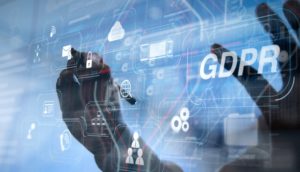
GDPR and the Transparency Revolution

(everything-possible/Shutterstock)
It’s been over a year since GDPR went into effect, and in that time, the regulation has driven a great deal of meaningful conversations around consumer privacy and enterprise data management policies. In an age where “data is the new oil,” fueling innovation and growth, enterprises face all kinds of new challenges when it comes to handling consumer data.
Large data breaches are constantly putting personal data at risk, and today, consumers are demanding greater transparency when it comes to the collection and use of their data, marking a shift from the days when everyone blindly accepted terms of service contracts from tech companies.
GDPR has forced companies to be honest and clear about how they leverage data now that consumers are paying more attention to the fine print. Individuals are more informed than ever before of their privacy rights and are exercising them accordingly, and organizations are finally beginning to understand the importance of demonstrating accountability and transparency with how they collect, handle, and transfer personal data. One slight misstep in the wrong direction, and enterprises may run the risk of hefty, crippling fines or worse: losing customers.
Thanks to GDPR, companies are finally realizing that while data is a hugely valuable asset, it is also a significant liability. Companies that fail to prioritize transparency around data privacy and protection aren’t just risking damage to financial profit and brand reputation, they’re also risking non-compliance with the most important overarching obligation of the GDPR. To get ahead of this, proactive organizations have already taken steps to ensure transparency and compliance in the age of GDPR.
Capturing Consent at Every Step of the Customer Journey
A large portion of the GDPR text is dedicated to regulating how businesses capture consent in an effort to demonstrate transparency. Updating a company’s privacy policy is a great start, but capturing consent by adding clear and concise language to every lead form, chat box, and email opt-in is ideal. Individuals should know exactly what they’re signing up for, and companies that give them the option to do so are taking a step in the right direction towards data transparency and accountability.
Adopt Data Minimization Practices
For awhile, professional data scientists were in high demand, and companies sought to amass and subsequently analyze as much data as possible to drive business innovation and growth. This mentality has changed in the wake of GDPR.
Businesses are adopting data minimization practices at collection or at retention so they can handle less but more meaningful data, and they’re putting policies in place to dispose of it when it’s no longer needed or useful. Ultimately, an organization’s best cybersecurity measure is to collect less data and encrypt it so that it’s safe in the event of a breach.
Consider Encryption and Data Distribution
Encryption is what makes personal data indecipherable to anyone who isn’t authorized to see it, and data distribution is what essentially bifurcates information files so they aren’t held all in one place where they would likely be more susceptible to a cyber attack.
Companies that care about their customers, employees, and vendors as much as they care about being GDPR-compliant should adopt data minimization practices and leverage technology to encrypt and distribute the small amount of data they do collect.
Don’t Skimp on Quality Cybersecurity
We live in a world where companies are collecting and handling more personal data than ever before, but holding any amount of data is risky if an organization isn’t doing enough to protect it.
The benefits of having less data to manage is that there’s less data to steal, but that shouldn’t exempt companies from implementing cybersecurity strategies and technologies that don’t just “tick the box” for GDPR compliance, but that are actually effective at thwarting cyber crime. New technologies exist that can provide data protection competence while still enabling companies to offer compelling and customized digital experiences for customers that give them confidence that their data isn’t being carelessly collected or processed.
It’s time for global organizations to proactively address the fact that data is both an asset and a liability by being more thoughtful about how much data they’re capturing instead of storing everything, unfiltered, for some unforeseen future use.
Companies need data to function–it’s an asset to every organization, and it would be unrealistic (and unfair) to ask a company to stop collecting it entirely. However, businesses that understand the risks associated with negligent data management practices will be better positioned to comply with GDPR and offer clarity to data subjects. Collecting only the most relevant information for a very specific purpose is not only easier to explain to individuals, but it also gives them confidence that you won’t misuse or abuse it.
It’s then up to you, the organization, to communicate transparently with your consumers and put processes in place to prioritize their personal data and handle it responsibly.
About the author: David Thomas is the CEO of Evident ID, a provider of online identify verification solutions. David has held key leadership roles at Motorola, AirDefense, VeriSign, and SecureIT. Since being recruited at a young age by the Department of Defense, David has been at the forefront of cybersecurity including firewalls as corporations began connecting to the Internet, Web security as online shopping emerged, wireless security as Wi-Fi and smartphones became ubiquitous, and security sensing networks as analytic technology became mainstream. He has been featured in CNN, The Wall Street Journal and other leading publications.
Related Items:
Capital One Hack Highlights Poor Data Security Practices
Big Data Security: Progress Is Made, But Is It Enough?
June 16, 2025
- Cloudera Kicks Off EVOLVE25 Global Events Series to Showcase the Future of AI
- Operant AI Launches MCP Gateway to Secure Runtime AI Agent Workflows
- BigID Introduces 1st Data-Driven Assessment for AI Governance and Third-Party AI Use
- Tencent Cloud Backs European AI Growth with Multi-Cloud and Ecosystem Strategy
- Linux Foundation Announces 2025 Open Source Summit Europe Schedule for Amsterdam
- Bloomberg Integrates Natural Language Search Across Terminal Research Content
June 13, 2025
- PuppyGraph Announces New Native Integration to Support Databricks’ Managed Iceberg Tables
- Striim Announces Neon Serverless Postgres Support
- AMD Advances Open AI Vision with New GPUs, Developer Cloud and Ecosystem Growth
- Databricks Launches Agent Bricks: A New Approach to Building AI Agents
- Basecamp Research Identifies Over 1M New Species to Power Generative Biology
- Informatica Expands Partnership with Databricks as Launch Partner for Managed Iceberg Tables and OLTP Database
- Thales Launches File Activity Monitoring to Strengthen Real-Time Visibility and Control Over Unstructured Data
- Sumo Logic’s New Report Reveals Security Leaders Are Prioritizing AI in New Solutions
June 12, 2025
- Databricks Expands Google Cloud Partnership to Offer Native Access to Gemini AI Models
- Zilliz Releases Milvus 2.6 with Tiered Storage and Int8 Compression to Cut Vector Search Costs
- Databricks and Microsoft Extend Strategic Partnership for Azure Databricks
- ThoughtSpot Unveils DataSpot to Accelerate Agentic Analytics for Every Databricks Customer
- Databricks Eliminates Table Format Lock-in and Adds Capabilities for Business Users with Unity Catalog Advancements
- OpsGuru Signs Strategic Collaboration Agreement with AWS and Expands Services to US
- What Are Reasoning Models and Why You Should Care
- The GDPR: An Artificial Intelligence Killer?
- Fine-Tuning LLM Performance: How Knowledge Graphs Can Help Avoid Missteps
- It’s Snowflake Vs. Databricks in Dueling Big Data Conferences
- Inside the Chargeback System That Made Harvard’s Storage Sustainable
- Snowflake Widens Analytics and AI Reach at Summit 25
- Top-Down or Bottom-Up Data Model Design: Which is Best?
- Why Snowflake Bought Crunchy Data
- Change to Apache Iceberg Could Streamline Queries, Open Data
- Stream Processing at the Edge: Why Embracing Failure is the Winning Strategy
- More Features…
- Mathematica Helps Crack Zodiac Killer’s Code
- It’s Official: Informatica Agrees to Be Bought by Salesforce for $8 Billion
- AI Agents To Drive Scientific Discovery Within a Year, Altman Predicts
- Solidigm Celebrates World’s Largest SSD with ‘122 Day’
- DuckLake Makes a Splash in the Lakehouse Stack – But Can It Break Through?
- The Top Five Data Labeling Firms According to Everest Group
- Who Is AI Inference Pipeline Builder Chalk?
- ‘The Relational Model Always Wins,’ RelationalAI CEO Says
- IBM to Buy DataStax for Database, GenAI Capabilities
- VAST Says It’s Built an Operating System for AI
- More News In Brief…
- Astronomer Unveils New Capabilities in Astro to Streamline Enterprise Data Orchestration
- Yandex Releases World’s Largest Event Dataset for Advancing Recommender Systems
- Astronomer Introduces Astro Observe to Provide Unified Full-Stack Data Orchestration and Observability
- BigID Reports Majority of Enterprises Lack AI Risk Visibility in 2025
- Databricks Unveils Databricks One: A New Way to Bring AI to Every Corner of the Business
- MariaDB Expands Enterprise Platform with Galera Cluster Acquisition
- Snowflake Openflow Unlocks Full Data Interoperability, Accelerating Data Movement for AI Innovation
- Gartner Predicts 40% of Generative AI Solutions Will Be Multimodal By 2027
- Databricks Announces 2025 Data + AI Summit Keynote Lineup and Data Intelligence Programming
- Databricks Announces Data Intelligence Platform for Communications
- More This Just In…




























